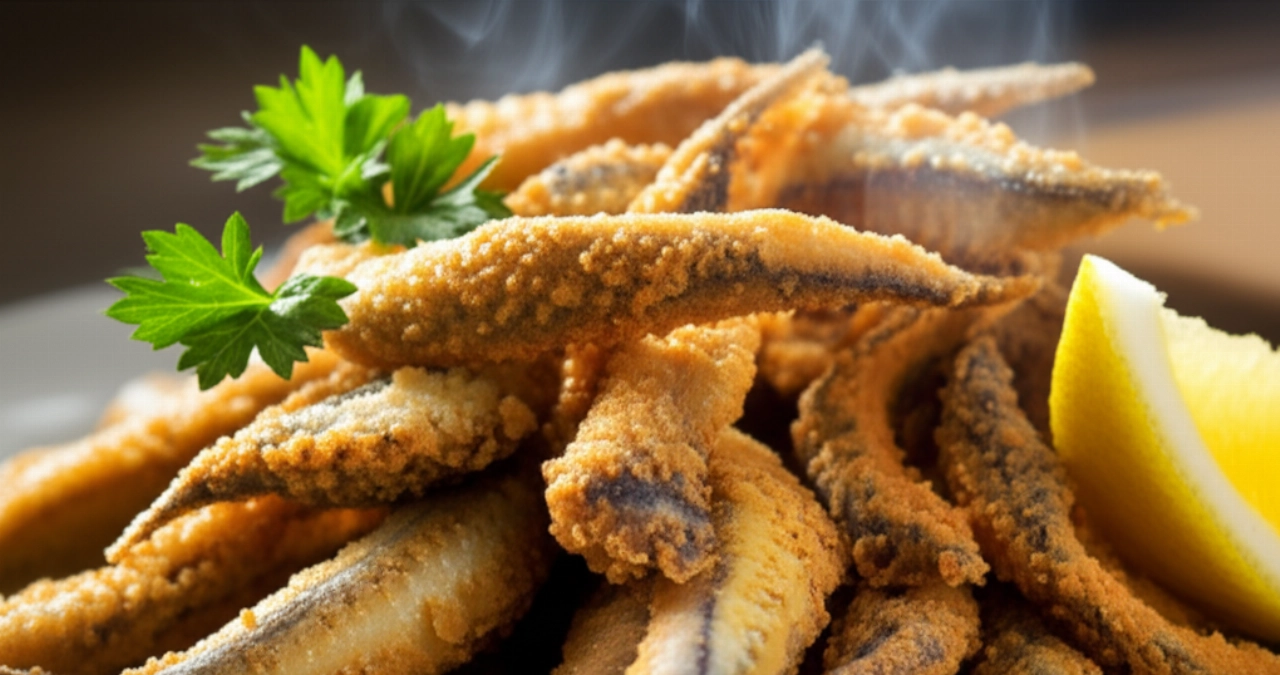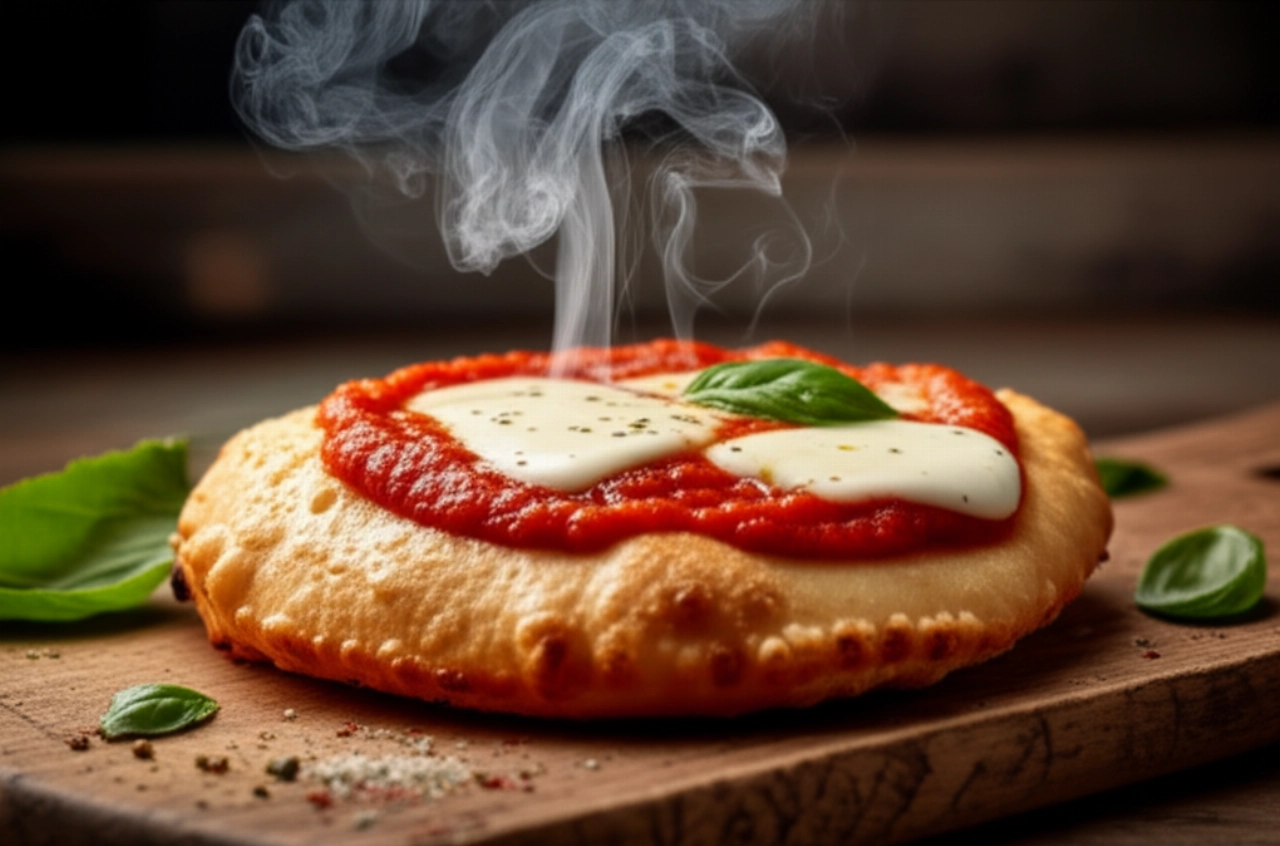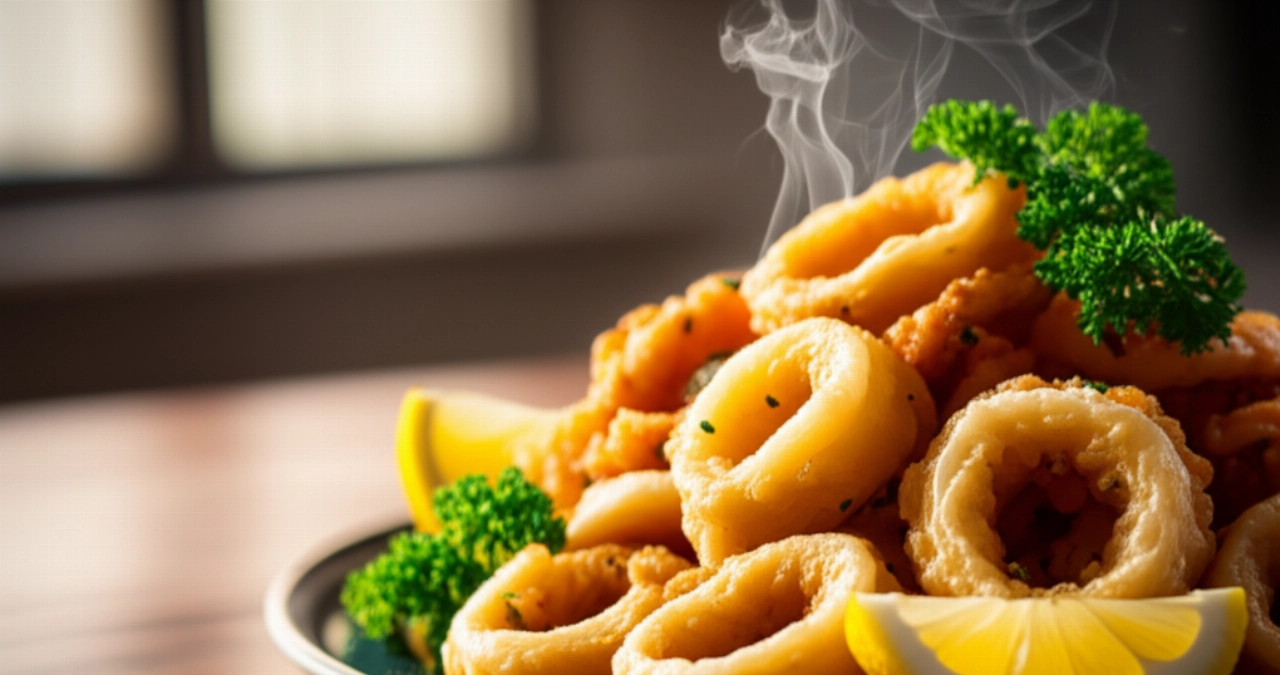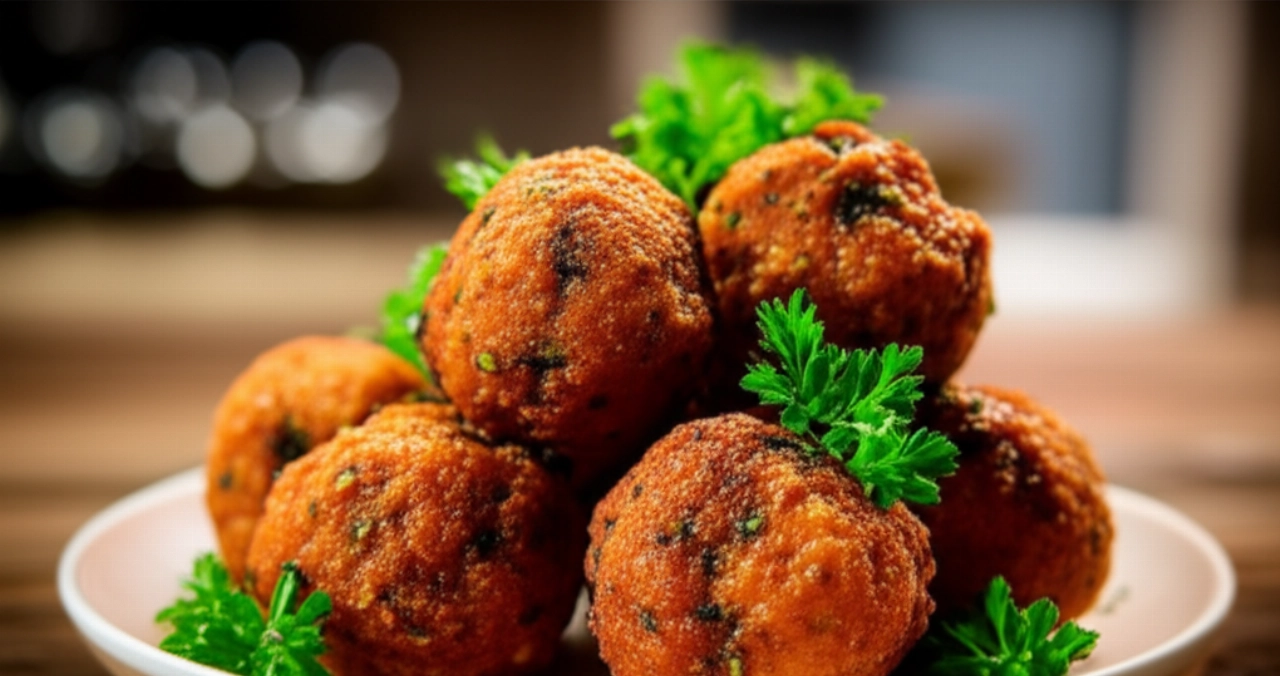Imagine the intoxicating aroma spreading through your home, that mix of sweetness and acidity that only well-cooked bell peppers can offer. Do you dream of a peperonata that is a true triumph of flavors, a versatile side dish, or a light and tasty main course?
But how many times have you ended up with a watery, bland peperonata or with mushy bell peppers, almost a puree? Finding the right recipe, one that guarantees grandma's result, can seem like a challenge.
Get comfortable, because today I will reveal all the secrets to preparing the perfect Peperonata, one that will make you look great and feel like a true chef. Not just a list of ingredients, but an infallible guide, full of practical tips for guaranteed success. Here, failure is not an option!
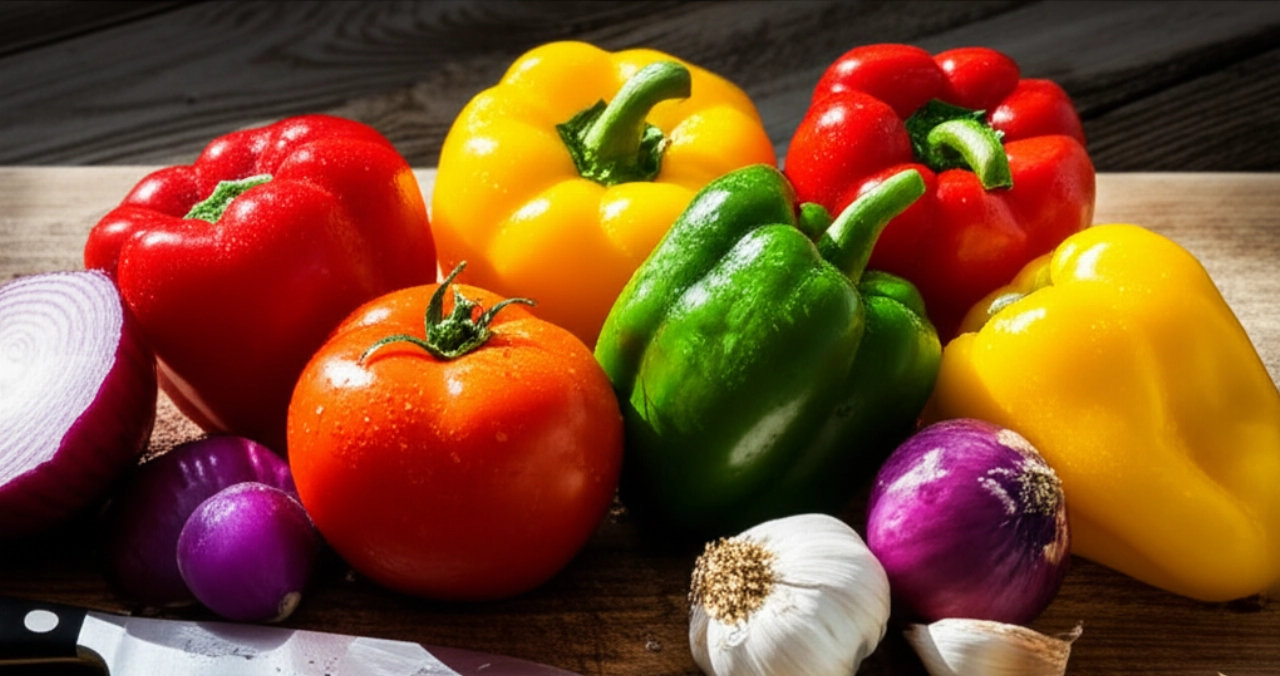
Smart Ingredients: The Choice That Makes the Difference
Peperonata is a simple dish, but its success depends heavily on the quality and choice of ingredients. It's not just 'what' you put in, but 'why' you put it in and 'how' you choose it.
- Bell Peppers: Choose fleshy, firm, and shiny bell peppers of different colors (red, yellow, green). Each color has its own degree of sweetness and consistency, and the mix creates a perfect balance of flavors and a visually beautiful dish. Avoid those with spots or that are too soft; they are a sign of lack of freshness.
- Onion: A sweet white or yellow onion is ideal. It will be the aromatic base that blends perfectly with the bell peppers without overpowering their flavor.
- Tomatoes: Ripe and juicy tomatoes, like San Marzano or datterini, or a good quality tomato passata. The tomato will provide that acidic note that balances the sweetness of the bell peppers and create a rich, enveloping sauce. If using fresh tomatoes, peel them and remove the seeds for a more refined and digestible result.
- Extra Virgin Olive Oil: Don't skimp on quality! A good EVO oil is essential for an aromatic soffritto and to enhance the flavor of the vegetables. It is the common thread that binds all the flavors.
- Fresh Basil: To be added at the end, off the heat. Fresh basil gives a fragrance and a touch of freshness that elevates the dish. Don't use dried, it's not the same thing!
- Salt and Pepper: To taste, but always taste! Salt enhances flavors, pepper adds a touch of liveliness.

The 3 Mistakes That Make Peperonata Watery or Bland (and How to Avoid Them)
Even an apparently simple dish like Peperonata hides pitfalls. But don't worry, your grandma chef is here to guide you and help you avoid the most common mistakes that ruin the final result.
- 1. Not cleaning the bell peppers properly: Leaving the seeds and internal white parts (ribs) makes the peperonata bitter and less digestible. Dedicate a few extra minutes to this operation: cut the bell peppers in half, remove the stem, completely empty the inside, and scrape away all the white parts. It's a small gesture that makes a big difference!
- 2. Cooking all the bell peppers together or over too low heat: If you put all the bell peppers in the pan at once, you lower the temperature too much and boil them instead of browning them. The result? Soft and watery bell peppers. Cook them over high heat, perhaps in batches if the pan is small, to brown and slightly caramelize them, thus developing their flavor.
- 3. Adding too much water (or not letting it evaporate): Bell peppers release a lot of water during cooking. If you add more water or don't let the natural water evaporate, your peperonata will be a soup. Cook over medium-high heat with the lid on only at the beginning to soften, then remove it to let the liquids evaporate and concentrate the flavors. The perfect Peperonata should be thick and rich, not watery.
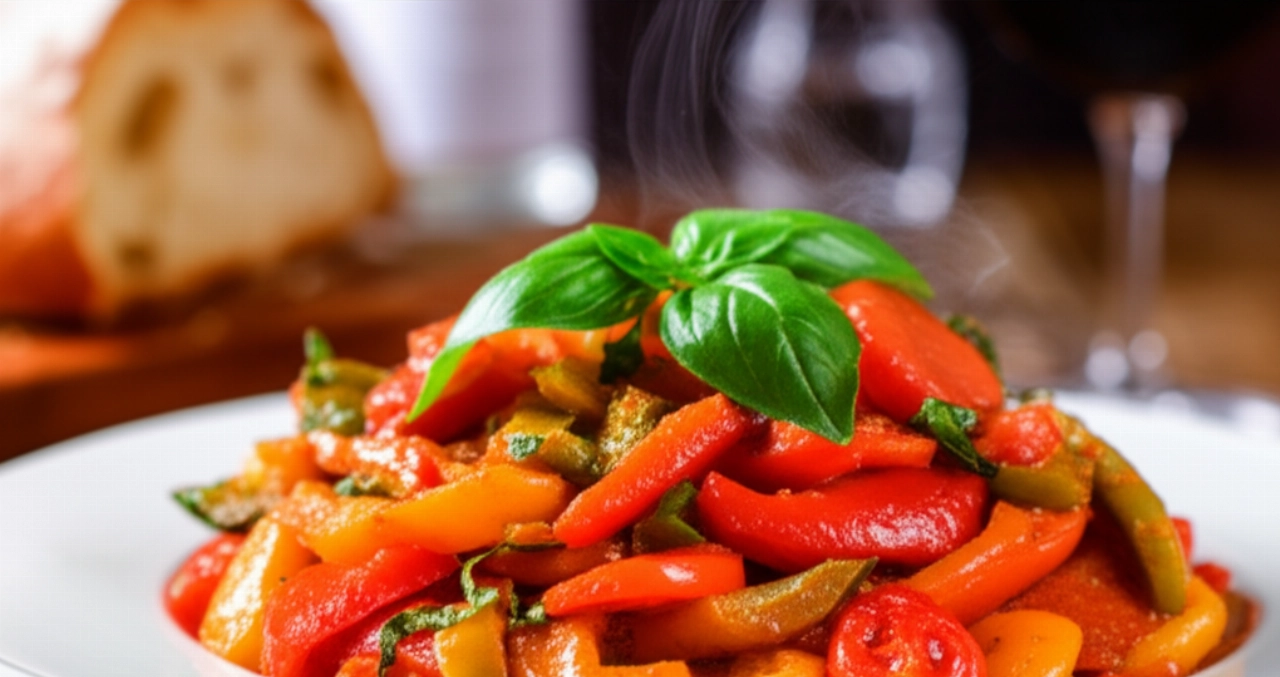
Grandma's Secret: The Magic Touch for an Unforgettable Peperonata
My grandma always said that Peperonata is a dish that 'makes itself', but with a little trick that makes it special. And she was right!
Her secret, which I share with you today, was to add a teaspoon of sugar (or a pinch of baking soda) to the tomatoes during cooking. This simple gesture helps balance the acidity of the tomato and enhance the natural sweetness of the bell peppers, creating an incredible balance of flavors. Don't worry, it won't make the peperonata sweet, but just more harmonious and well-rounded on the palate. Try it to believe it!
Let's Prepare the Perfect Peperonata Together: The Step-by-Step Guide
Now that you know all the secrets, it's time to get your hands dirty (or rather, into the bell peppers!). Follow each step carefully, and success will be guaranteed.
Ingredients:
- 1 kg mixed bell peppers (red, yellow, green)
- 1 large onion
- 400g peeled tomatoes (or quality tomato passata)
- 2 cloves garlic (optional, for those who love the flavor)
- Extra virgin olive oil to taste
- Salt to taste
- Freshly ground black pepper to taste
- A few fresh basil leaves
- 1 teaspoon sugar (or a pinch of baking soda, grandma's secret!)
Tools:
- Large pan with lid
- Sharp knife
- Cutting board
- Wooden spoon
Instructions:
- Prepare the bell peppers: Wash the bell peppers thoroughly. With a sharp knife, cut them in half, remove the stem, all the seeds, and the internal white ribs. This step is crucial for digestibility and to avoid bitterness. Cut the bell peppers into strips about 1-2 cm wide. Try to make them all the same size for even cooking.
- Prepare the soffritto: Peel the onion and chop it finely. In a large, heavy-bottomed pan, pour a generous amount of extra virgin olive oil. Heat the oil over medium heat and add the chopped onion (and garlic, if using, whole or chopped). Sauté the onion gently for about 5-7 minutes, until it becomes translucent and soft, without burning it. This is the base of the flavor!
- Add the bell peppers: Slightly increase the heat and add the bell peppers cut into strips to the pan. Stir well to coat them in the oil and onion. Brown the bell peppers for about 10-15 minutes over medium-high heat, stirring often. If the pan is too full, cook them in two batches to avoid lowering the temperature too much.
- Add the tomato and grandma's secret: When the bell peppers are slightly softened, add the peeled tomatoes (crush them with a fork or pass them through a sieve) or the passata. At this point, also add the teaspoon of sugar (or the pinch of baking soda). Mix all ingredients well.
- Slow and controlled cooking: Cover the pan with a lid and lower the heat to minimum. Let the peperonata stew for at least 30-40 minutes, or until the bell peppers are tender but still firm, not mushy. During cooking, check occasionally and stir. If you see it drying out too much, you can add a ladle of hot water, but only if strictly necessary.
- Concentrate the flavors: In the last 10-15 minutes of cooking, remove the lid and slightly raise the heat. This will allow excess water to evaporate and the sauce to thicken and concentrate all the flavors. Season with salt and pepper. Taste and adjust if necessary.
- The final touch: Turn off the heat. Add the fresh basil leaves, tearing them with your hands directly into the peperonata. Stir gently. Let the peperonata rest in the pan for at least 10-15 minutes before serving: this will allow the flavors to blend even better. Peperonata is even better lukewarm or even the next day!
Tips and Frequently Asked Questions about Perfect Peperonata
Here I answer the most common questions I get asked about Peperonata, to clear up any doubts and guarantee you an impeccable result.
- Can I peel the bell peppers? Of course! If you want an even more digestible and velvety peperonata, you can roast the whole bell peppers in the oven or on the grill until the skin blackens and bubbles. Then put them in a paper bag or under a damp cloth for 10-15 minutes (the steam will help loosen the skin). At that point, peel them, remove seeds and filaments, and proceed with the recipe. It's an extra step, but worth it for those with digestion issues.
- Can peperonata be prepared in advance? Absolutely yes! In fact, peperonata is one of those dishes that improves the day after, because the flavors have time to blend and intensify. Prepare it a day in advance, store it in the refrigerator in an airtight container, and gently reheat it before serving.
- How can I store leftover peperonata? You can store it in the refrigerator for 3-4 days in an airtight container. If you've made a lot, you can also freeze it! Divide it into portions in freezer-safe containers or freezer bags, and it will keep for about 3 months. Thaw in the refrigerator and reheat gently.
- Can I add other vegetables? Of course, peperonata is very versatile! You can enrich it with zucchini cut into rounds or eggplant diced, adding them along with the bell peppers or shortly after, depending on their consistency. Just remember not to overload the pan so as not to lower the cooking temperature too much.
- Why is my peperonata bitter? There are two main causes: you haven't properly removed the seeds and internal white ribs of the bell peppers, or you burned the onion or bell peppers during the initial browning. Make sure to clean the vegetables well and cook over controlled heat.
There you have it! Now you hold not just a recipe, but a true guide to preparing a Peperonata that tastes of sunshine, summer, and authentic Italian cuisine. A simple dish, but one that with the right precautions becomes a masterpiece of flavor and aroma.
Don't be afraid to get cooking. Every time you prepare a dish with love and attention, you are creating a memory, a moment of joy. And with this recipe, success is guaranteed. Get ready to receive compliments!
Have you tried our Peperonata recipe? We are very curious to know how it went and to see your masterpiece! Leave a comment below, tell us about your experience, or share a photo on Instagram tagging @CercaRicette.it. If you loved this Peperonata, you can't miss our recipe for a summer first course like Pasta alla Norma or an even lighter side dish like Sautéed Zucchini. We look forward to seeing you in the kitchen!
